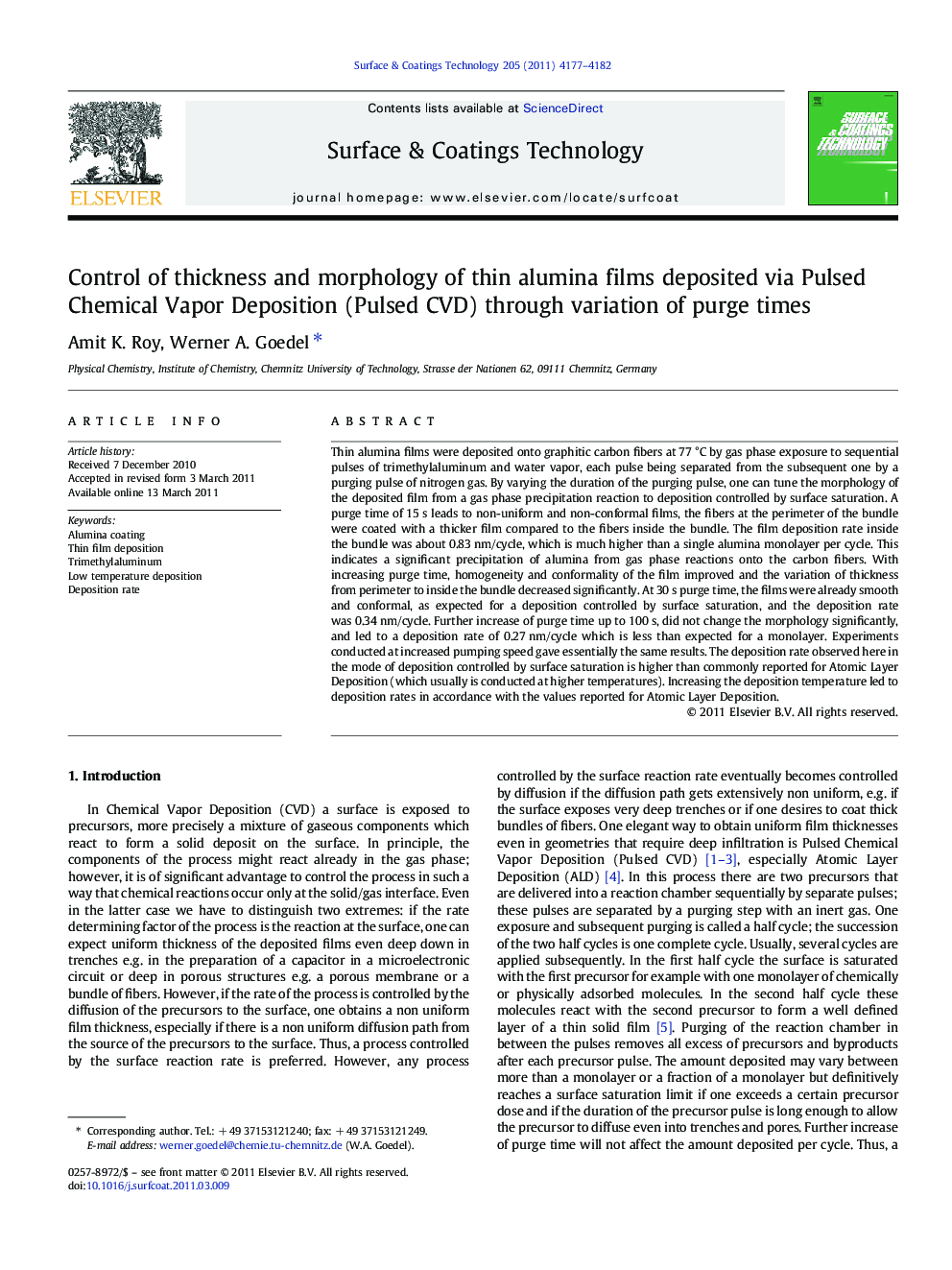| کد مقاله | کد نشریه | سال انتشار | مقاله انگلیسی | نسخه تمام متن |
|---|---|---|---|---|
| 1659256 | 1517678 | 2011 | 6 صفحه PDF | دانلود رایگان |

Thin alumina films were deposited onto graphitic carbon fibers at 77 °C by gas phase exposure to sequential pulses of trimethylaluminum and water vapor, each pulse being separated from the subsequent one by a purging pulse of nitrogen gas. By varying the duration of the purging pulse, one can tune the morphology of the deposited film from a gas phase precipitation reaction to deposition controlled by surface saturation. A purge time of 15 s leads to non-uniform and non-conformal films, the fibers at the perimeter of the bundle were coated with a thicker film compared to the fibers inside the bundle. The film deposition rate inside the bundle was about 0.83 nm/cycle, which is much higher than a single alumina monolayer per cycle. This indicates a significant precipitation of alumina from gas phase reactions onto the carbon fibers. With increasing purge time, homogeneity and conformality of the film improved and the variation of thickness from perimeter to inside the bundle decreased significantly. At 30 s purge time, the films were already smooth and conformal, as expected for a deposition controlled by surface saturation, and the deposition rate was 0.34 nm/cycle. Further increase of purge time up to 100 s, did not change the morphology significantly, and led to a deposition rate of 0.27 nm/cycle which is less than expected for a monolayer. Experiments conducted at increased pumping speed gave essentially the same results. The deposition rate observed here in the mode of deposition controlled by surface saturation is higher than commonly reported for Atomic Layer Deposition (which usually is conducted at higher temperatures). Increasing the deposition temperature led to deposition rates in accordance with the values reported for Atomic Layer Deposition.
Research highlights
► In Chemical Vapor Deposition, film thickness and morphology depend on purge time.
► We have used low deposition temperature (77 °C) to isolate film growth mechanism.
► Growth mechanism varies from gas phase precipitation to surface saturation.
► Surface saturation implies conformal film with a deposition rate of 0.27 nm/cycle.
► It will be helpful to manipulate the film growth mechanism in various applications.
Journal: Surface and Coatings Technology - Volume 205, Issues 17–18, 25 May 2011, Pages 4177–4182